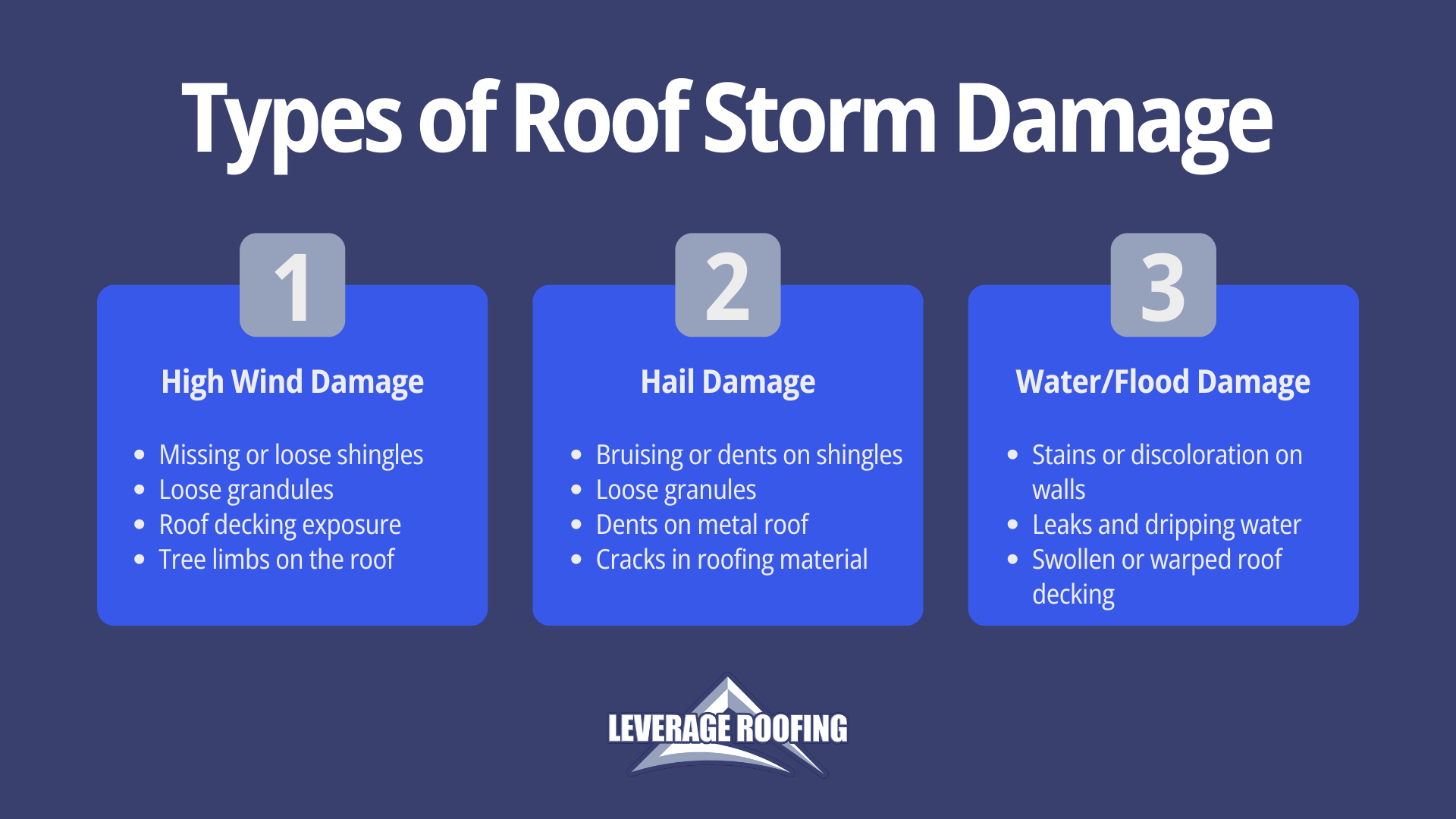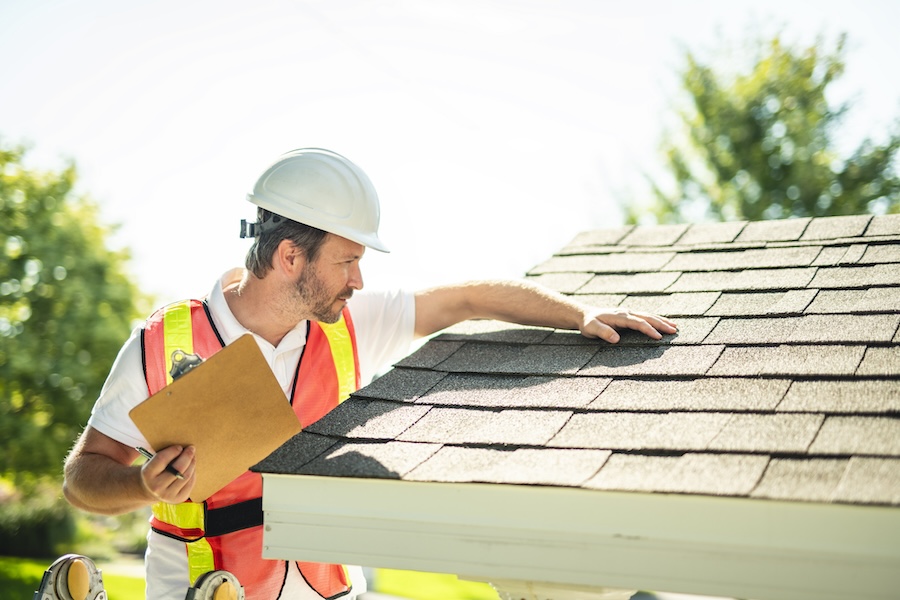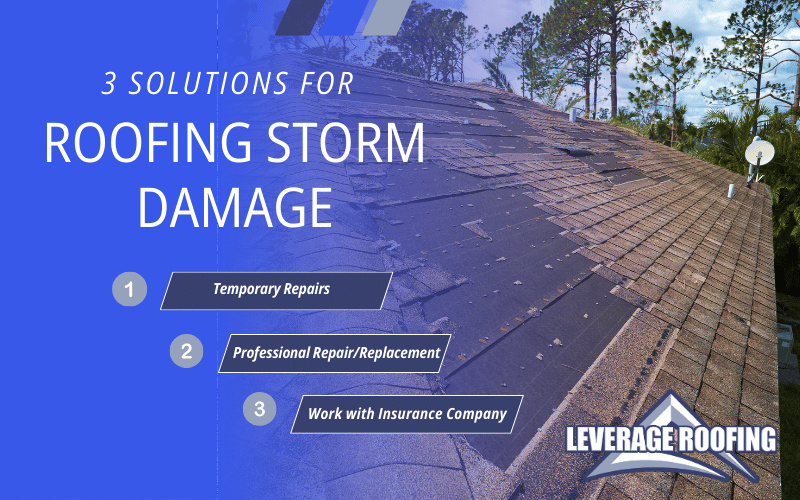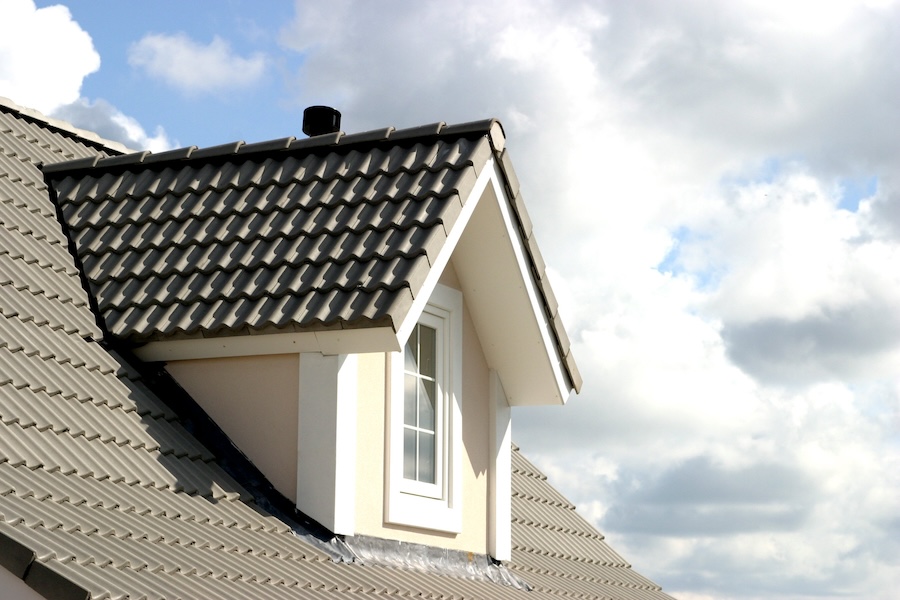When a storm hits your house, the last thing you want to worry about is roof damage and the cost of fixing it. But, by knowing the types and signs of damage, you can save money and your roof from further damage. The most common types of room damage are caused by high winds, hail, or flooding, usually, these can be noticed by a quick visual inspection of your roof. After identifying any damage, it is crucial to get a further inspection and to have the damage fixed by professionals. Our experts at Leverage Roofing provide further information on the types of roof damage, steps to take after identifying the damage, and possible solutions.

Types of Roof Storm Damage
Roof storm damage can vary depending on the type and severity of the weather event. Whether it’s caused by high winds, hail, or water and flooding, each type of damage presents unique challenges that require prompt attention. Identifying the signs of storm-related roof damage early can prevent further harm to your home and ensure a smoother insurance claim process.
Damage from High Winds
High winds can wreak havoc on a roof, especially when gusts exceed normal thresholds during a severe storm. Strong wind can lift and tear asphalt shingles, exposing the roof decking underneath. Without immediate attention, this exposure can lead to further damage, such as water infiltration and structural damage.
Signs of Wind Damage:
- Missing or Loose Shingles – Shingles may be completely torn off or appear slightly lifted, making them vulnerable to further wind damage.
- Loose Granules – Strong winds can strip asphalt shingles of their protective granules, reducing their durability.
- Roof Decking Exposure – If wind damage is extensive, sections of the roof may be left bare, increasing the risk of water damage.
- Tree Limbs on the Roof – High winds can break off branches and cause serious damage if they land on the roof.
Hail Damage
Hail storms are among the most destructive forms of severe weather for roofs. The impact of hailstones can crack or dent roofing material, leading to significant damage that may not be immediately visible.
Signs of Hail Damage:
- Dents or Bruising on Asphalt Shingles – Hail impact often causes dark spots or soft spots that indicate material compromise.
- Loose Granules – Hail can knock off granules from shingles, leading to premature aging and increased vulnerability to further damage.
- Dents on Metal Roofs – Unlike asphalt shingles, metal roofs often show visible dents or dimples from hail impact.
- Cracks in Roofing Material – Hailstones can cause fractures that weaken shingles, increasing the likelihood of roof leaks.
Water and Flood Damage
Heavy rain, ice dams, and flooding during a severe storm can cause substantial roof and structural damage. When water seeps through damaged roofing material, it can lead to leaks, mold growth, and costly roof repairs.
Signs of Water Damage:
- Stains and Discoloration – Water damage often appears as dark spots or streaks on ceilings and walls.
- Leaks and Dripping Water – If water is actively entering the home, emergency repairs are needed to prevent further damage.
- Swollen or Warped Roof Decking – Prolonged exposure to moisture can cause the roof decking to weaken and deteriorate.

Steps to Take After Identifying Roof Storm Damage
After a storm, it is always important to inspect and document any damage to your roof. This can help mitigate later problems caused by unnoticed damage, such as structural issues due to water damage. Documenting damage can also help in the future when submitting an insurance claim.
Roof Inspection
After identifying potential storm damage to your roof, it’s crucial to schedule a professional inspection by a qualified roofing contractor. A professional roofer has the expertise to thoroughly assess the damage, identify underlying issues, and recommend the appropriate repairs or replacements. Early inspection helps prevent further damage and ensures that repairs are done correctly, potentially saving you from more extensive repairs down the line.
Document the Roof Damage
To support your insurance claim, it’s essential to document the damage as thoroughly as possible. Take clear pictures of any visible roof damage, including missing shingles, dents, or signs of water infiltration. Note the extent of the damage and any areas that may require immediate attention, as this documentation will be key when filing your claim with the insurance company.
Reach Out to Your Insurance Company
Once you’ve documented the damage, contact your insurance company to start the claims process. Communicate with your insurance agent to verify your coverage and determine the next steps. In some cases, you may need to meet with an insurance adjuster who will assess the damage firsthand to determine how much of the repair costs will be covered by your homeowner’s policy. Prompt communication with your insurer ensures a smoother claims process and helps expedite necessary roof repairs.

Solutions to Addressing Roof Storm Damage
Temporary Repairs
After a storm, temporary repairs can play a vital role in preventing further damage to your roof and home. If there are exposed areas or leaks, covering them with a tarp or making quick, temporary fixes helps to shield the interior from additional water damage. These repairs are crucial for minimizing the risk of structural damage, especially when waiting for professional roof repairs to be completed.
Professional Roof Repair or Replacement
Once temporary repairs are in place, it’s important to hire a professional roofing contractor to assess and address the storm damage fully. A skilled roofer can provide the necessary repairs or determine if roof replacement is needed. Roof repair typically involves fixing specific areas of damage, such as replacing missing shingles or patching leaks. In contrast, roof replacement is often necessary when the damage is extensive or when the roof has reached the end of its lifespan. A professional roofing contractor ensures that your roof is restored to its proper condition, preventing future issues and maintaining the integrity of your home.
Working Directly with Your Insurance Company
Navigating the insurance claim process is a critical step in managing roof storm damage. Understanding the terms “Actual Cash Value” (ACV) and “Insurance Coverage” is key to knowing what your insurance policy will cover. ACV refers to the value of your roof after depreciation, while insurance coverage refers to the protection offered under your homeowner’s policy for roof damage. Working directly with your insurance company ensures that you understand your coverage, so you can make informed decisions about the necessary repairs and avoid unexpected out-of-pocket expenses.

Why Choose Leverage Roofing for Roof Storm Damage Solutions?
Leverage Roofing is a trusted, local, family-owned business dedicated to serving homeowners and businesses with top-quality roofing services. With years of experience and a commitment to customer satisfaction, we have built a reputation for providing reliable, professional solutions for storm damage and other roofing needs.
Our Services
At Leverage Roofing we offer a comprehensive range of services to address roof storm damage, ensuring your property is well-protected and restored to its best condition.
- Seamless Gutters – Install and repair seamless gutters to direct water flow away from your roof and foundation, preventing potential flooding and water damage.
- Siding Installation and Repair – Protect your home’s exterior with professional siding services, ensuring both aesthetics and durability.
- Metal Roofing – Choose metal roofing for its durability and ability to withstand extreme weather, offering long-term protection against storms.
- Insurance Claim Support – We use our expertise to help you navigate the complexities of insurance claims and ensure you get the coverage you deserve.
- Commercial and Residential Roofing and Repairs – Whether you need roofing services for your home or business, we provide prompt, reliable repairs and installations tailored to your needs.
Choosing Leverage Roofing means you’ll benefit from convenient office hours, a strong commitment to the local community, and professional, high-quality roofing services. We pride ourselves on treating each customer with the utmost respect and providing long-lasting solutions for all types of roof storm damage.
Contact us today for a free inspection and let us help you get your roof back in top shape.
Resources:
https://www.weather.gov/pqr/wind
https://www.bankrate.com/homeownership/home-structural-repairs-and-issues/#structurally-sound


